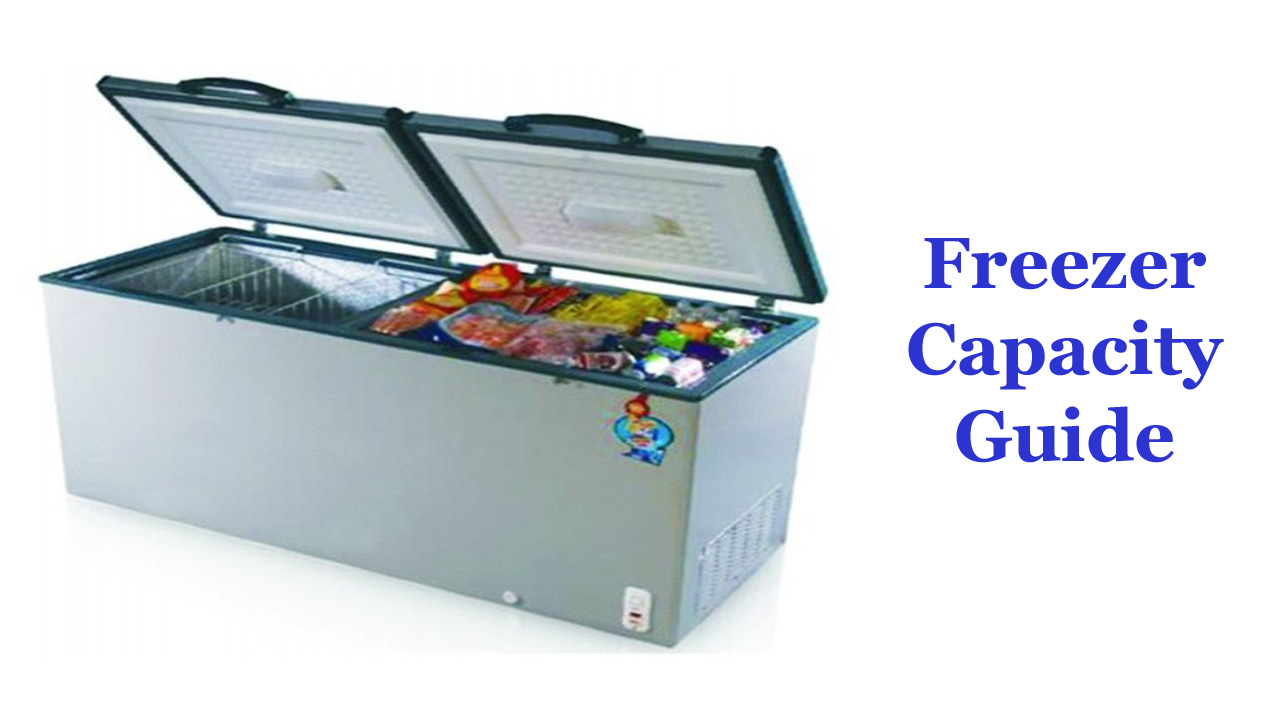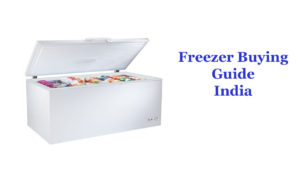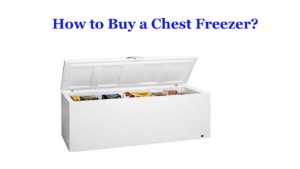The quantity of storage space available in a freezer is called freezer capacity. This is an essential consideration when buying a freezer because it determines how much food you can store in it. The quantity of storage space available in a freezer is called freezer capacity.
This capacity is measured in cubic feet (cu. ft.) and decides the number of frozen food items that can be stored in the freezer. Freezers come in various sizes, with capacities ranging from around 3 cubic feet for small versions to over 20 cubic feet for larger models.
- Numerous factors, such as the size of your family, the kinds of food you plan to keep, and the amount of space in your home, will affect the size of freezer you need. It’s worth mentioning that freezer capacity can also be expressed in litres, particularly in metric-using countries.
- The cubic foot-to-litre conversion factor is roughly 28.3. As a result, a freezer with a capacity of 10 cubic feet corresponds to a fridge with a capacity of 283 litres.
When shopping for a freezer, look at the capacity in cubic feet and gallons to guarantee you get the right size for your requirements. Another essential factor to consider when determining freezer capacity is the freezer’s organization and accessibility. A larger freezer capacity allows you to store more food items but may also make it more difficult to stay organized and locate what you need.
Look for freezers with movable shelves or baskets, which allow you to personalize the store space and make it simpler to find and utilize the items you require. Some freezers also include features such as LED brightness or transparent doors, which allow you to see inside the cooler more readily.
When deciding on the capacity, keep the position of the freezer in mind. For example, if you intend to store the freezer in a garage or other unheated area, a larger capacity freezer may be required to adjust for the lower ambient temperature. However, its efficiency and capacity will suffer because the freezer will have to work harder to keep the intended temperature in a colder environment.
If you intend to keep the freezer in a heated indoor space, you can get away with a smaller capacity freezer because the required temperature will be maintained with less effort.
Another thing to think about when deciding on freezer capacity is your lifestyle and cooking routines. For example, if you regularly cook excessively and prepare meals for later use, you may require a larger freezer. A larger freezer can also store additional food and drinks if you love entertaining and hosting large gatherings.
When determining the freezer capacity you require, keep in mind the kinds of food you intend to store. For example, meat and poultry take up more room than other foods, so you may need a bigger freezer to store them.
Freezer types: There are two kinds of freezers: upright and chest. Upright freezers, like refrigerators, are tall, narrow, and intended to stand upright. Chest freezers are wider and shorter than standard freezers and are intended to be stored horizontally. Chest freezers are wider and shorter than standard freezers and are intended to be stored horizontally. Freezers are available in a range of styles and capacities.
The following is a general guide to the freezer capacity of various kinds of freezers:
- Portable freezers are smaller and are frequently used for hiking, boating, or tailgating. They usually have 1 to 3 cubic feet of capacity.
- Chest freezers have the most space of any form of the freezer. They can have capacities ranging from 3 to 25 cubic feet, with most models lying between 7 and 15 cubic feet.
- Upright freezers are designed more like refrigerators, often providing more organization and simpler access to food items. They usually have capacities ranging from 3 to 20 cubic feet, with the majority of models falling between 10 and 15 cubic feet.
- Drawer freezers are built-in refrigerators that are becoming increasingly common in modern kitchen designs. They usually have 3 to 5 cubic feet of capacity.
- It’s worth noting that freezer capacity varies by manufacturer and model, so it’s always a good idea to read the specifications of a specific freezer before buying. Additionally, consider that factors such as the size of your household and the amount of food you intend to store in the freezer can influence the best size freezer for your needs.
- The capacity of a freezer is defined as cubic feet. (cu. ft.). This measurement refers to the quantity of freezer space accessible for storing frozen items.
- The size of your household will determine the size of your freezer. For a family of four, a freezer with a size of at least 10 to 12 cubic feet is advised; for larger families, a freezer with a capacity of 15-20 cubic feet or more is advised.
Frequency of use: If you intend to use your freezer frequently, consider purchasing a bigger capacity freezer. This will provide you with more storage space and allow you to store more food items simultaneously.
The type of food you intend to store will also decide the freezer size you require. A bigger freezer is required if you intend to store large items such as turkeys or roasts. A smaller freezer may serve if you store mostly smaller items such as frozen vegetables or ice cream.
Finally, think about the quantity of space you have available for your freezer. Make sure to measure the area where you intend to store the freezer to ensure that you buy a model that will fit comfortably.
Consider any extra features that may impact the freezer capacity you require. For example, if the freezer has an ice maker built in, this may take up some storage room. The total capacity may also be affected if the freezer has adjustable shelves or baskets. Furthermore, some freezers have frost-free technology, which can reduce total capacity. Consider these variables when determining the size of your freezer.
Future requirements: When determining the capacity of a freezer, consider any future requirements that may emerge. For example, if you intend to grow your family or host large gatherings in the future, consider a freezer with a larger capacity than you currently require. This can help you prevent having to buy a new freezer if your needs change in the future.
When deciding on a capacity, it’s also essential to consider the freezer’s energy efficiency. A larger freezer will typically consume more energy than a smaller one, so select a size that suits your requirements without being excessively large. Look for freezers with the Energy Star label.
Conclusion
Finally, choosing the right freezer capacity necessitates huge factors, including the size of your family, the kinds of food you intend to store, your budget, the location of the freezer, your lifestyle and cooking habits, and any additional features that may affect the capacity. Considering all of these factors, you can select a freezer with the appropriate capacity to meet your requirements and ensure that you have enough space to store frozen food items without waste.
It’s also worth noting that some freezers include features like adjustable shelves, removable baskets, and door storage to help optimize capacity. These features can help you make the most of your available room and store a broad range of items in your freezer. When choosing a capacity, it’s also essential to consider the freezer’s energy efficiency, as a larger freezer may use more energy than a smaller one.In order to save money over time on your energy costs, look for freezers that have earned the Energy Star certification. These models are more energy-efficient.




